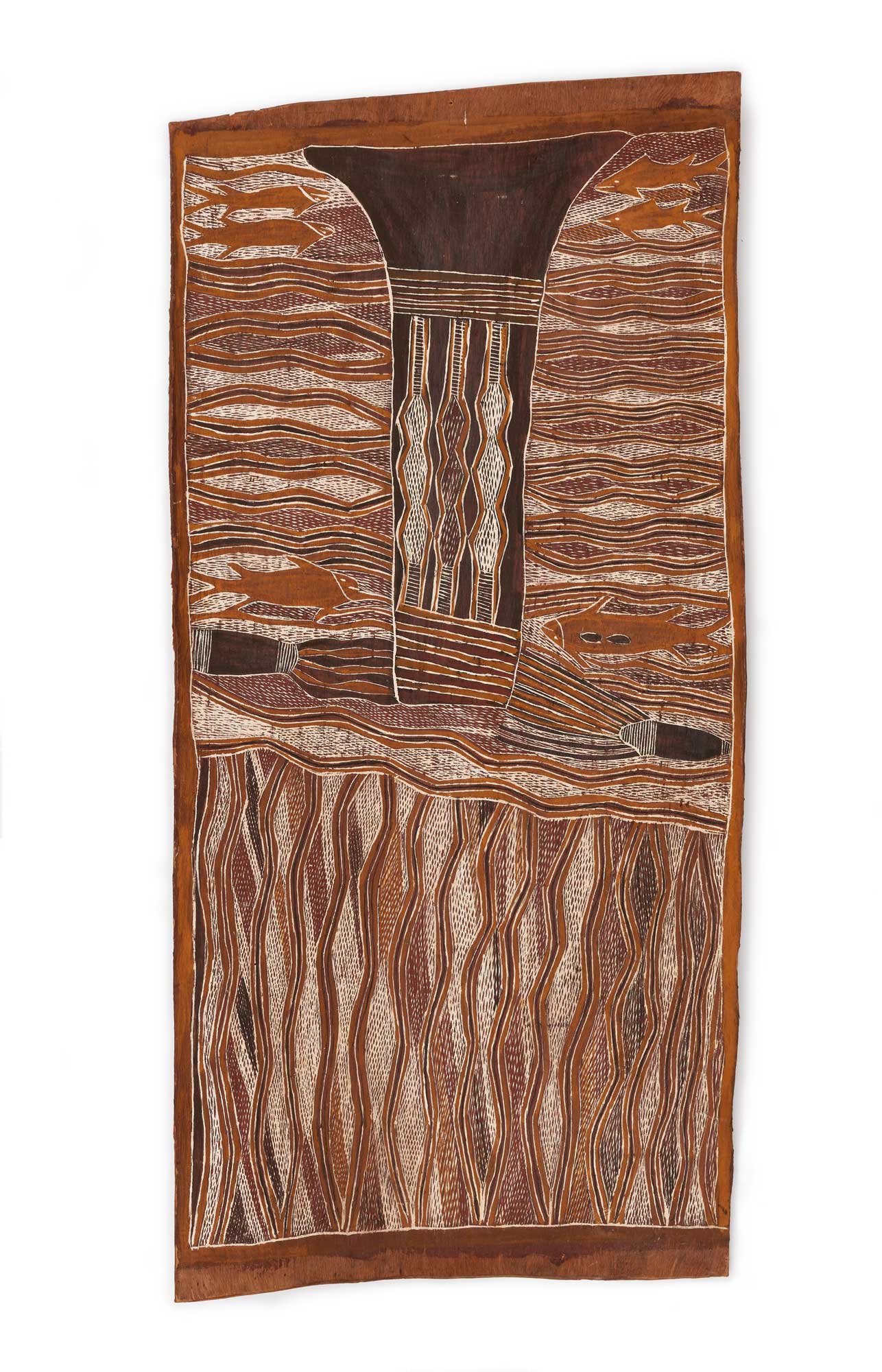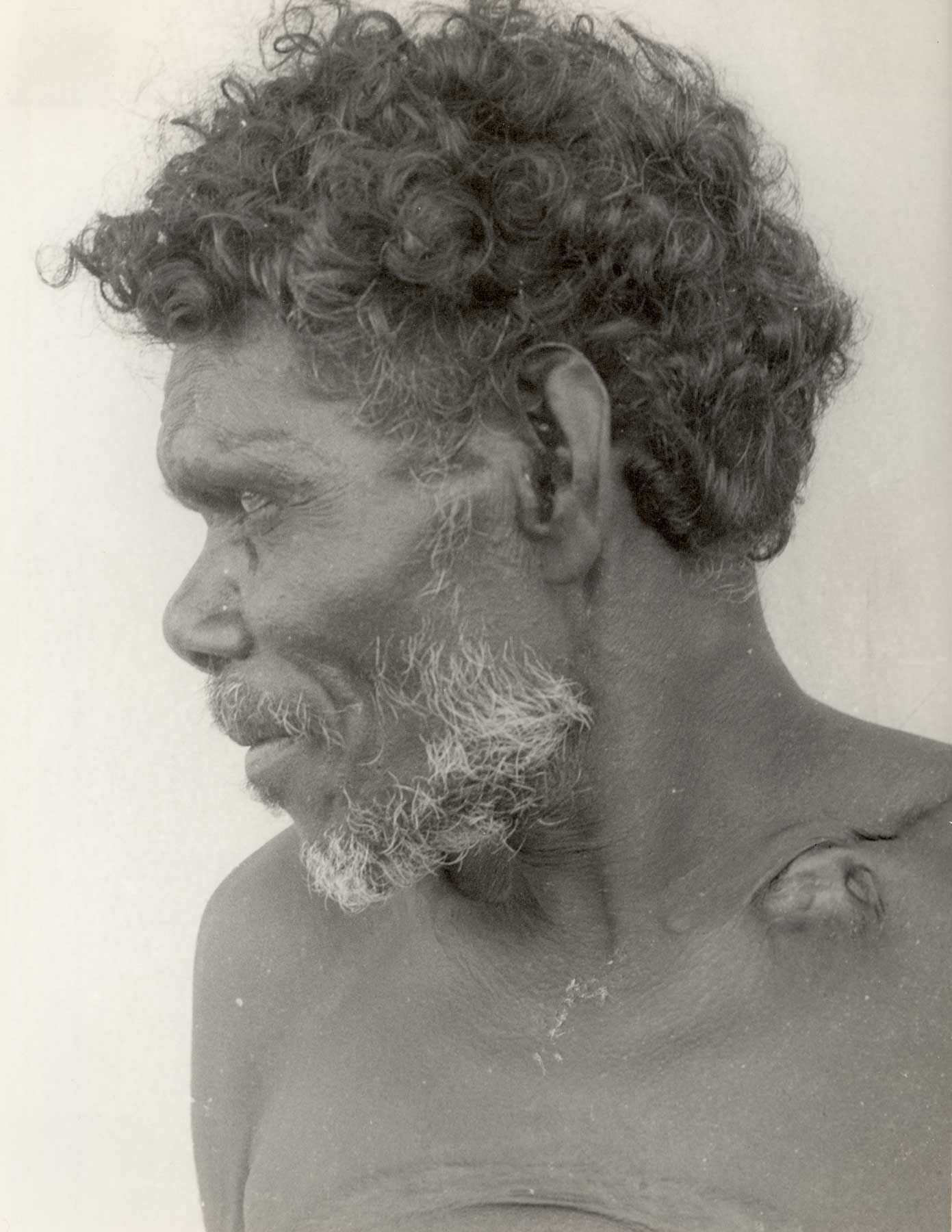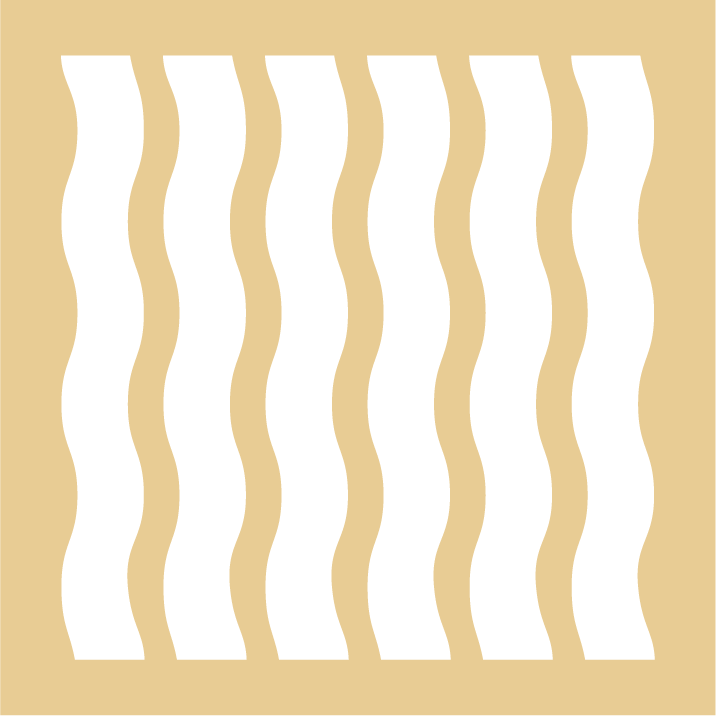
"We call this rock Dhukururru. And that is at Wayawupuy. That is my freshwater area, along with the saltwater area where the Yiŋapuŋapu (burial ground) is [at Djarrakpi]. And here, in the middle, is the Dhakandajli (hollow-log coffin), where the waters run down, from Ritharrŋu Country. But now, those old men, my fathers, Narritjin and Nänyin are gone, just me. "
– BALUKA MAYMURU
More Info
Wayawupuy is an inland stretch of one of the major river systems in Yolŋu Country. In Dhukurruru, Nänyin depicts a sacred rock that cuts across the flow of the river where two ancestral bathi (dillybag, a woven conical basket) paused before journeying on to the sea. The river rises in hilly country far inland near Ḏonydji, in the Ritharrŋu clan Country of the Yirritja moiety, and flows into the sea nearby in Grindall Bay. At its end, it flows through the Dhuḏi-Djapu’ estate of Dhuruputjpi of the Dhuwa moiety.
In ancestral times, the ancestor Ŋulumun traveled inland to the place of Dhukurruru, a sacred rock. His body transformed from human to kingfish. In ceremony, this metamorphosis is replicated by performers who hold a spear-thrower behind them, flicking it from side to side as if it were Ŋuykal’s tail. Nänyin’s painting exquisitely evokes the place and the presence of the Waŋarr at Wayawupuy. The river is almost enclosed by tall barrukal (Melaleuca quinquenervia, paperbark trees) on either side of the bark, their limbs extending over the water. The long,
thin leaves of the yoku (Aponogeton elongatus) plant flow with the current, creating patterns on the rippled surface of the water, lit in places by the sunlight filtering through the branches. The background patterns of the paintings are almost symphonic variations on the Maŋgalili clan's miny’tji (designs) that represent the ŋarraka, the spiritual backbone of the clan.
In Dhukururru | Sacred Rock the core miny’tji is engraved on the body of the rock. Yolŋu designs are inherently multivalent. This miny’tji, as well as being the ŋarraka, of the clan, represents the strings of yoku leaves, its edible corm and the flow of the current in the river.
– Howard Morphy
Additional Information
Decade
c.1963
Medium
Natural pigments on eucalyptus bark
Dimensions (IN)
32 1/4 x 15 1/4
Dimensions (CM)
81.9 x 38.7
Credit
Kluge-Ruhe Aboriginal Art Collection of the University of Virginia. Gift of John W. Kluge, 1997. 1996.0018.006.
Narrative
Maŋgalili
The Maŋgalili clan belongs to the Yirritja moiety. Their major spiritual theme revolves around the...
Location
1960s
The 1960s were a decade of tumult and triumph for Yolŋu art and artists. In...
About The Artist(s)

Clan
Maŋgalili
Artist Dates
c.1914-1969
Alternative Names
Nanjin, Nanung, Nanyan
Nänyin Maymuru
Nänyin Maymuru was the elder brother of Narritjin Maymuru. Along with his brother, he painted the Maŋgalili section of the Yirrkala Church Panels and developed the distinctive Maŋgalili school of painting continued by their children Baluka Maymuru, Galuma Maymuru and Naminapu Maymuru-White.
Collections Represented
Art Gallery of New South Wales
Art Gallery of Western Australia
Kluge-Ruhe Aboriginal Art Collection of the University of Virginia
